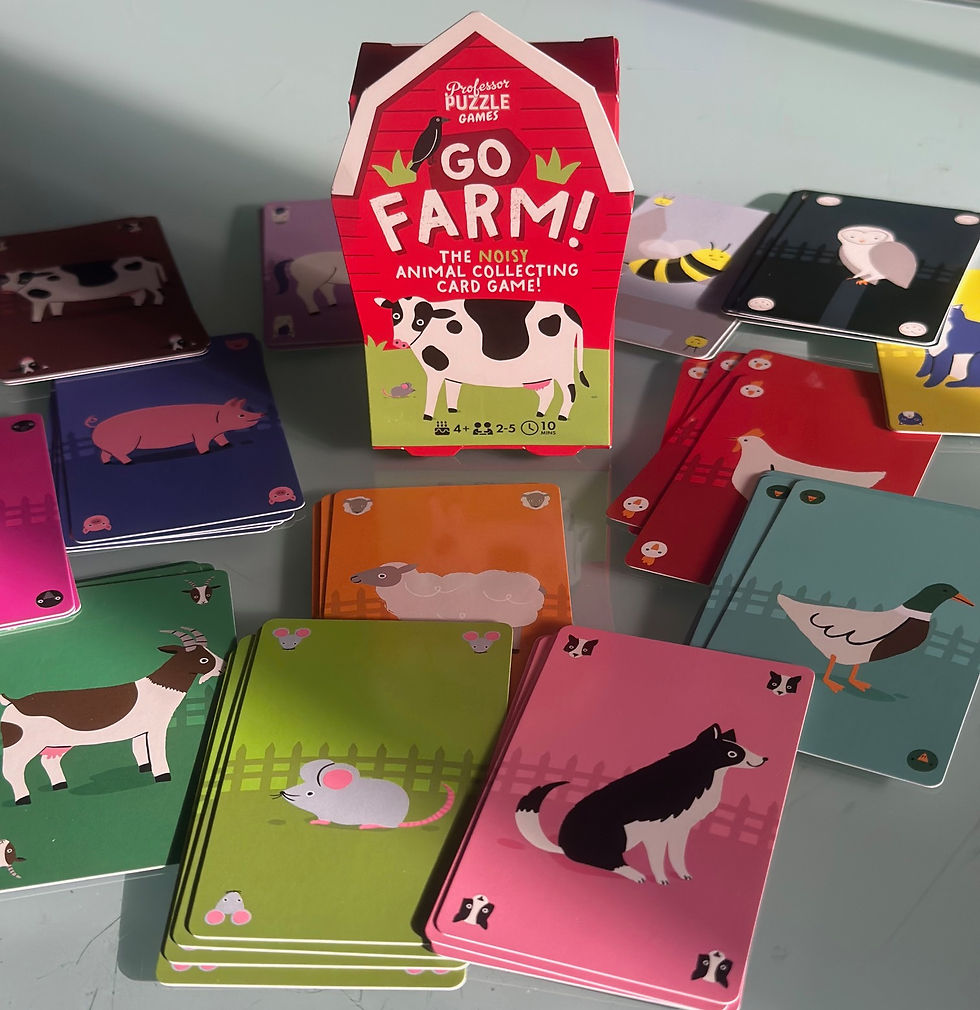Hanamikoji
- Board's Eye View

- Nov 18, 2021
- 3 min read
This isn't a new game - it first appeared in 2013 - but this new edition from EmperorS4 gives us a good excuse to revisit the geisha district of Kyoto to compete for the favours of the game's seven illustrious geishas.
Designed by Kota Nakayama, with art by Maisherly and Mashiro Misaki, Hanamikoji is a two-player game that each round uses 20 cards from a 21-card deck. The cards represent the items (and colours) of seven geishas but the number of items matching each geisha differs (in the range 2–5). The 'charm points' value of the cards also matches their frequency.

You'll need to know how many cards there are for each geisha because, in its mechanics, Hanamikoji plays like an area control game. You will be trying to win the favour of geishas by playing cards to them. At the end of the round, the marker for a geisha moves to your side of the table if you've played more cards to her than your opponent. Win the favour of four geishas (probably over the course of three or four rounds) and you win the game. You also win with fewer than four geishas if their total 'charm point' value is 11 or more. Wherever the number of cards played to a particular geisha are tied then the favour token does not move. That means that once you've succeeded in moving a token to your side of the table, you only need to tie for that geisha in the next round in order to keep it on your side of the table.
Game play is simple but involves some delicate judgement calls. You start with a hand of six cards and you draw a card at the start of each turn. Players each have four actions that they must take each round but you can take them in any order. The actions are:
1 - Secret: Choose a card from your hand and place it facedown under the token. It will be scored at the end of the round as if it had been played to the applicable geisha, but, during play, your opponent won't know which geisha it affects...
2 - Discard: Take two cards from your hand and place them facedown under the token. These cards are treated as having been taken out of play. They won't count in scoring, which means that fewer cards would be needed to win the favour of the relevant geishas
3 - Gift: This is an 'I cut, You choose' action: you take three cards from your hand and pass them to your opponent. They choose one to play to a geisha on their side of the table and you play the other two
4 - Competition: Similar to Gift, except that it involves four cards which you first divide into two sets of two. Your opponent chooses and places one set and you take the other.
You can see that these choices involve a subtle degree of bluff and subterfuge. You'll have 10 cards in a round and you'll have to give three of them to your opponent, with them having choice among the cards you offer up. You want to win geishas to your side but you also need to reduce your opponent's success in winning over geishas...
Hanamikoji is a quick and easy to play tug-of-war area control game. It uses no more cards than some versions of the microgame Love Letter (AEG) yet it has remarkable depth.




